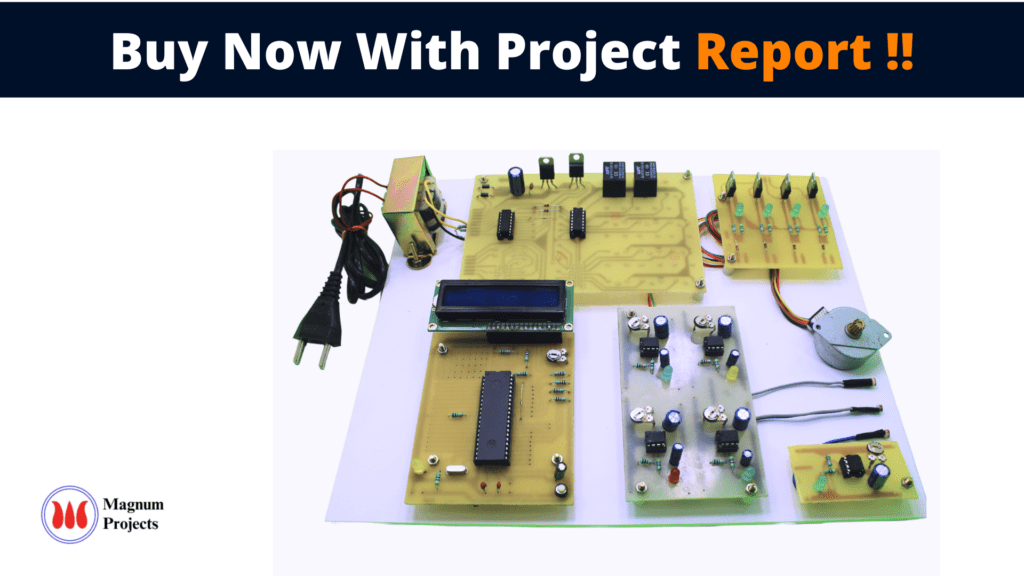Table of Contents
Introduction:


Since human evolution, mankind has exploited naturally available resources such as Wind, Water & Solar energy. The availability of resources restricts the use of Wind and Water energies as alternative power sources. But Sun is available. There are some hopes that the sun will become a main source of energy in the 21st century. By then, sources of oil will be almost exhausted and will only play a minor part in the supply of energy. The present interest in solar energy is therefore not surprising. Some work has already been done with solar cells and solar panels. However, these only operate with optimum performance when positioned exactly at right angles to the sun. Unfortunately, this situation is not usual in our latitudes unless the solar panels are rotated around the sun. The efficiency of a solar panel system can be improved if the panels track the sun, and remain as long as possible at the most favorable angle of incidence.
The project “SOLAR TRACKING SYSTEM” is an attempt to achieve maximum utilization of solar energy. This is achieved by tracking the movement of the Sun and keeping charging solar cells below the Sun’s availability zone for maximum time. By this one can get the maximum utilization of the Sun presence.
Most of the energy that we get from the greatest reservoir of energy, the Sun, remains unused. The only way to store the energy from the sun is to convert it into electrical form and then use this electrical signal to charge batteries and thus store the energy in chemical form. For this, we make use of solar panels consisting of solar cells. The solar cell gives an electrical output that is proportional to the intensity of light falling over it.


Block diagram explanation:
Power supply unit:
This section needs two voltages viz., +12 V & +5 V, as working voltages. Hence specially designed power supply is constructed to get regulated power supplies.
Buffers:
Buffers do not affect the logical state of a digital signal (i.e. a logic 1 input results in a logic 1 output whereas logic 0 input results in a logic 0 output). Buffers are normally used to provide extra current drive at the output but can also be used to regularize the logic present at an interface.
Drivers:
This section is used to drive the relay where the output is the complement of input which is applied to the drive but the current will be amplified.
Relays:
It is an electromagnetic device that is used to drive the load connected across the relay and the o/p of the relay can be connected to the controller or load for further processing.
Indicator:
This stage provides a visual indication of which relay is actuated and deactivated, by glowing respective LED or Buzzer.
Methodology:
The main aim of this project is an attempt to achieve maximum utilization of solar energy. This is achieved by tracking the movement of the Sun and keeping charging solar cells below the Sun’s availability zone for maximum time. Here the LDR is used to sense the orientation of the sun and based on the received signal the orientation of the stepper motor will take place at an angle of 45degree. The last LDR is used to rotate the solar panel 180 degrees if in case of night.
Advantages:
- No wastage of power & effective in the implementation and Effective implementation.
- The system costs less with reliability and longer life Low power consumption and compact size.
- It uses a natural, free, clean & inexhaustible source of energy. Conventional energy consumed is zero.
- Lower weight because of reduction in components. And expenditure on care & maintenance of the system is negligible.
- The modular construction of the system provides the flexibility of expansion as per requirement.
- It can be used as a decentralized energy system right at the place of use; hence there is no need for a transmission line.
- High reliability, due to the usage of power semiconductor devices.
- The system is monitored without any difficulty (no need for full attention).
- Installation of this system is very easy.
Disadvantages
- The low conversion efficiency of the panel.
- High capital cost.
Applications:
- Industries, Homes, Schools, and Colleges.
- Can be used for small & medium scale power generation.
- For power generation at remote places where power lines are not accessible.
- For domestic backup power systems.




